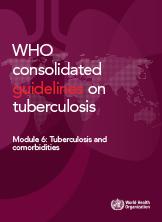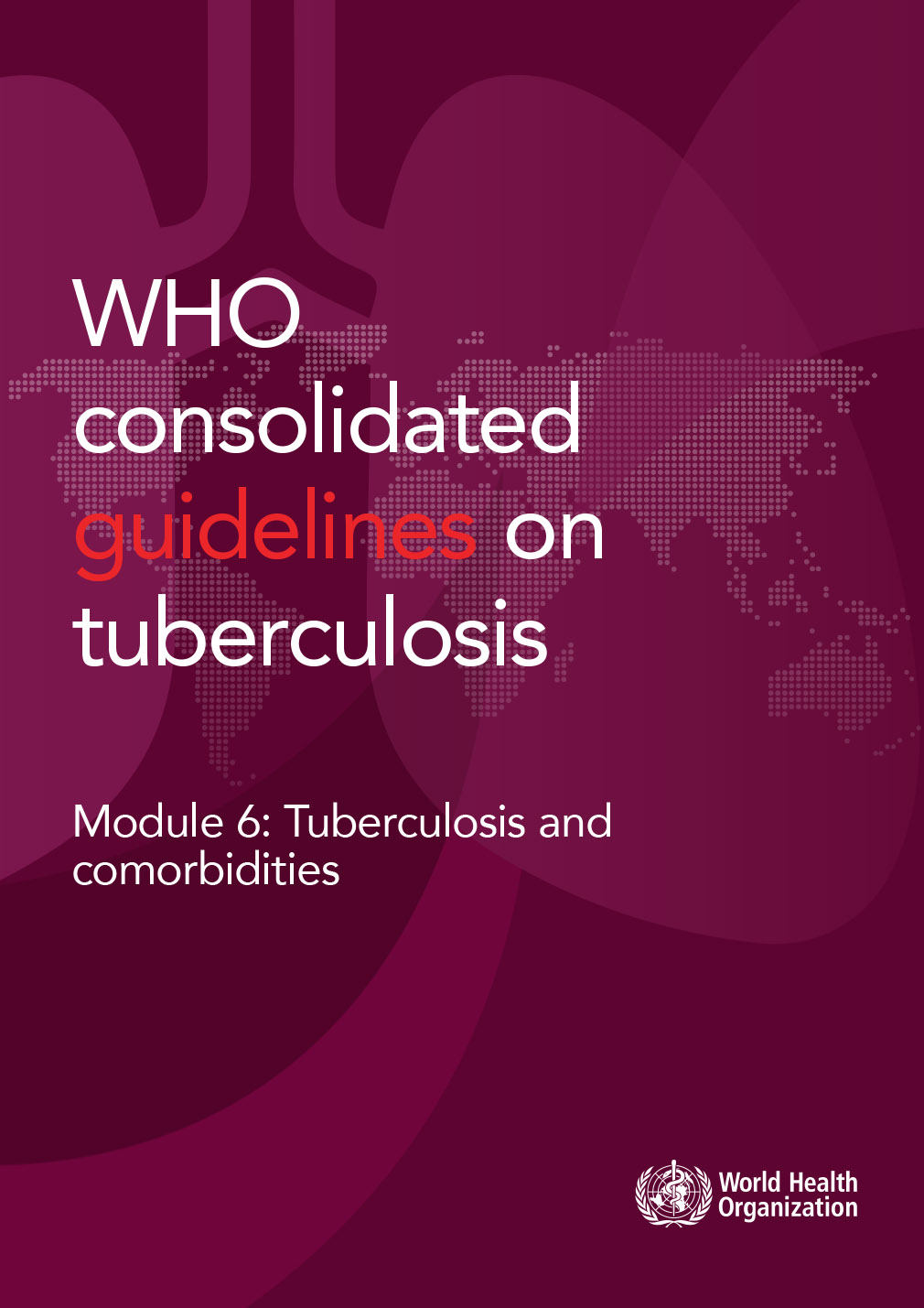Comorbidities
Introduction
Globally, tuberculosis (TB) remains a significant cause of ill health and is a leading cause of death due to an infectious agent (1). The TB epidemic is attributable to five main health-related risk factors globally, namely, diabetes mellitus (diabetes), HIV, smoking, undernutrition, and disorders due to alcohol use. The contribution of these risk factors to the global TB burden is reported annually in the WHO global tuberculosis report (1).
References for the annex
- Management of physical health conditions in adults with severe mental disorders: WHO guidelines. Geneva: World Health Organization; 2018 (https://iris.who.int/handle/10665/275718, accessed 27 October 2023).
- WHO Mental Health Gap Action Programme (mhGAP) [website].
Annex. WHO resources for mental and substance use disorders
Mental health guidelines
- Management of physical health conditions in adults with severe mental disorders: WHO guidelines (1)
- WHO Website: WHO Mental Health Gap Action Programme (mhGAP) (2)
- mhGAP Intervention Guide for mental, neurological and substance use disorders in non-specialized health settings: mental health Gap Action Programme - Version 2.0 (3)
Brief biological interventions
References
- Global tuberculosis report 2022. Geneva: World Health Organization; 2022 (https://www.who.int/publications/i/item/9789240061729).
- Framework for collaborative action on tuberculosis and comorbidities. Geneva: World Health Organization; 2022 (https://www.who.int/publications/i/item/9789240055056).
- The End TB Strategy.
4.4 Multimorbidity and TB-associated disabilities
TB often occurs along with other illnesses – not only mental disorders but also HIV, diabetes, hypertension and other conditions (70). These comorbidities are also independently associated with a higher risk of mental health problems (71). Health workers in TB and mental health services should endeavor to understand each person’s main priorities and concerns and support the treatment of both TB and mental disorders in order to comprehensively address the person’s needs.
4.3 Homelessness
Individuals who are homeless or in temporary housing have a significantly greater risk of exposure to TB, developing active TB and acquiring drug resistance (68); as well as an increased likelihood of having a mental health condition (69). Assessment of their situation and related socioeconomic risk factors is required (such as poor quality or no housing, low or no income), followed by referral to the necessary support (such as social care or financial, housing or employment support). Ongoing close monitoring then is needed to provide people-centred services.
Pagination
- Previous page
- Page 10
- Next page

 Feedback
Feedback

